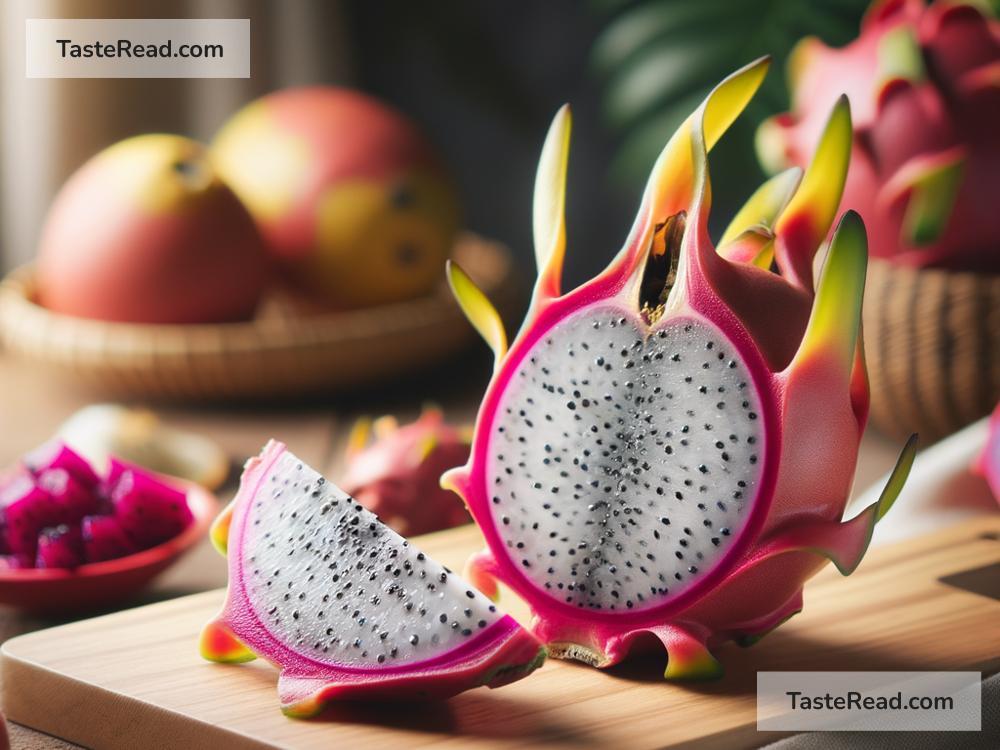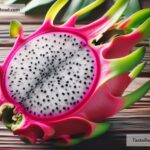Why Dragon Fruit Has a Unique Appearance
Dragon fruit, also known as pitaya, is one of the most eye-catching fruits you’ll ever see. Its vibrant pink or yellow skin, spiky green leaves, and white or red flesh dotted with tiny black seeds make it look like something out of a fantasy world. Many people are intrigued by this exotic fruit, not just because of its taste but also because of how unusual it looks. But have you ever wondered why dragon fruit has such a unique appearance? Let’s explore the reasons behind its fascinating features.
1. The Role of Nature and Reproduction
One of the key reasons dragon fruit looks so striking is linked to how plants reproduce in nature. Dragon fruit grows on cactus plants, specifically the genus Hylocereus, which thrives in tropical and subtropical climates. Like many fruits, dragon fruit’s bright colors are a way to attract animals such as birds and mammals. These animals eat the fruit and help spread its seeds. The bold pink or yellow color of dragon fruit stands out against the green landscape, making it easy for animals to spot. This helps the cactus plant ensure its seeds are dispersed far and wide.
The tiny black seeds that are scattered throughout the flesh also play a part in its appearance. They add texture and contrast, making the fruit visually interesting. These seeds are packed with nutrients, which may encourage animals to consume the fruit and spread the seeds to new areas.
2. Adaptations of the Cactus Plant
Dragon fruit comes from a type of climbing cactus. Unlike traditional cacti that grow in harsh deserts, Hylocereus cacti adapt to warm, humid environments. Because these cacti don’t grow straight up and instead use tree trunks or trellises for support, the fruit is designed to stand out on the plant. Its elongated shape and bright color prevent it from blending into the background, making it recognizable to both animals and humans.
The spiky green “leaves” on the skin aren’t real leaves—they’re actually part of the cactus’s modified stems. They give the fruit a dramatic, almost flame-like appearance. This distinctive look is likely an evolutionary trait that protects the fruit before it fully ripens, possibly deterring certain animals from eating it prematurely.
3. Pollination and the Night-Blooming Flowers
Before dragon fruit takes shape, the cactus produces large, beautiful flowers that bloom only at night. These flowers are white, fragrant, and strikingly large, designed to attract nocturnal pollinators like bats and moths. Since the flowers are so dramatic and unusual, it’s no surprise that the resulting fruit also shares a unique appearance. The dragon fruit’s flamboyant look complements its cactus parent plant’s extraordinary flowers.
The connection between pollination and appearance goes even deeper. After pollination, the fruit develops over time, incorporating the cactus’s need to stand out for seed dispersal. The bright, irregular shape of dragon fruit mirrors the boldness of its nighttime blooms.
4. Environmental Influences
Another reason dragon fruit looks so unique is the environment in which it grows. The cactus plant thrives in areas with abundant sunlight, warm temperatures, and nutrient-rich soil. These conditions support the development of fruits with vibrant colors and unique forms. Plants that grow in tropical regions often have brighter and more dramatic appearances compared to those in temperate zones. This is because plants in the tropics compete for attention from pollinators and animals to reproduce successfully.
The dragon fruit’s spiky green appendages might also be a response to environmental conditions. In nature, a tough or textured outer skin can help protect fruits from pests or harsh weather conditions. While the fruit itself is quite delicate, the outer casing helps shield it until it’s ready to be harvested or eaten.
5. Human Influence and Cultivation
While dragon fruit’s natural appearance is stunning, humans have played a role in enhancing its uniqueness. Farmers have cultivated dragon fruit for decades, selecting plants with the brightest colors, most attractive shapes, and tastiest flesh. This practice, known as selective breeding, has helped emphasize the fruit’s unusual characteristics. Over time, dragon fruit has become even more vibrant and appealing, making it one of the most exotic-looking fruits available.
In addition to cultivation, dragon fruit’s popularity in cooking, smoothies, and decorative dishes has further amplified its appeal. Chefs and food lovers are drawn to its colorful skin and speckled interior, making the fruit a favorite ingredient in artistic and creative recipes.
6. A Name That Matches the Look
Lastly, part of dragon fruit’s unique appearance comes from its name. The spikes and bright colors resemble flames, and many people think it looks like a mystical dragon egg. The name “dragon fruit” makes it even more exotic and enticing. While its actual taste is mild and slightly sweet, its appearance sparks curiosity and imagination for people all over the world.
Conclusion
Dragon fruit’s one-of-a-kind look isn’t just for show—it’s the result of natural adaptations, environmental factors, and human cultivation. Every part of the fruit’s appearance serves a purpose, whether it’s attracting animals for seed dispersal or protecting itself from harm. Its vivid colors, spiky texture, and striking interior reflect the beauty and ingenuity of nature. So the next time you enjoy a dragon fruit, take a moment to appreciate not only its taste but also the fascinating reasons behind its unique appearance.


